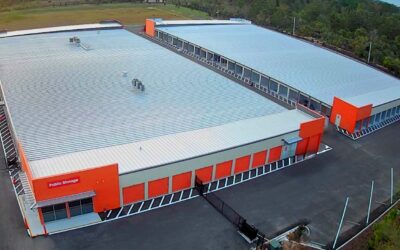Self-storage insiders have long maintained industry demand is driven by the “4 Ds” – death, divorce, dislocation and disaster.
Paul Fiorilla, research editorial director at Yardi Matrix, says he’s been lately hearing that maybe the list should be updated.
“Some people think there should be a new ‘D’ added: distribution,” said Fiorilla. “Some are seeing an increase in e-retailers using self-storage as distribution and logistics centers for their businesses.”
Rise in e-commerce drives demand for distribution space
According to other industry players, there indeed appears to be a significant uptick in smaller retailers, reacting to the rise of e-commerce during the pandemic, using self-storage facilities as sort of mini-warehouses to store inventory prior to final deliveries to homes and businesses.
No one has hard data yet on this emerging source of demand for self-storage space – nor is anyone sure if the trend will survive long past the pandemic.
But right now some self-storage operators are definitely experiencing an increase in business from small retailers using their facilities as effective distribution and logistics centers.
Catering to retail clientele
“We’re seeing some of it, yes” says Josh Boyd, CEO and co-founder of StoreEase Inc. “It’s hard to quantify how much, but it’s there. It’s real. We’re trying to make it easier for some (retail customers) to get items in and out of storage faster, such as using ‘smart locks,’ or digital locks, on units.”
Life Storage Inc., the publicly traded real estate investment trust, has not only seen a rise in smaller retailers using its facilities as effective mini-warehouses for inventory. It’s started a specific business unit to cater to such customers.
Last year, it launched new “micro-fulfillment centers” at a handful of its storage facilities across the country, as part of its “Warehouse Anywhere” program aimed at businesses that need extra storage space for items.
From self-storage to ‘micro-fulfillment’
“We’re working on growing the business,” Anthony Habib, the new head of Life Storage’s “Warehouse Anywhere” program, said of the new micro-fulfillment centers. “We’re optimistic.”
Working in partnership with Deliverr, Life Storage’s program will even handle delivery of items from storage lockers to homes and businesses, charging storage tenants extra for the “last mile” deliveries of goods.
Life Storage currently has micro-fulfillment centers within existing facilities in Atlanta, Chicago, Columbus, OH, Las Vegas and Los Angeles. Each “center” averages about 5,000 to 8,000 square feet, said Habib.
More businesses turn to storage
For years, self-storage owners have welcomed all sorts of business customers, often those with perishable goods who need space for their inventory, such as products sold by pharmaceutical sales representatives or wine merchants.
But Herby Bowman, senior director of business development at Store Space Self Storage, said his company started to see an increase in other types of businesses needing storage space during the pandemic.
They’ve included restaurant chains that moved some of their furniture and other items into storage due to public-health occupancy restrictions at their establishments.
They’ve also included small retailers who saw a boom in e-commerce during the pandemic – and desperately needed space for their inventories, Bowman.
Traditional warehouse space has been snapped up by larger e-retailers, such as Amazon, and warehouse rental prices have skyrocketed as a result, Bowman and other industry officials say.
So some smaller retailers have simply opted to store their inventories at self-storage facilities. “It makes sense,” says Bowman. “Self-storage is an easy and quick way to get storage.”
He said demand for space from smaller e-retailers is “simply making self-storage a better commodity than it already was.”
‘A natural fit’
Marc Boorstein, a principal at MJ Partner Self-Storage Group, said use of storage facilities as mini-warehouses by e-retailers appears to be spreading as traditional warehouse space becomes less available and more expensive
“It seems like such a natural fit,” he said of small e-retailers using self-storage facilities. “I don’t know where it’s all going. We just don’t know how big it’s going to be in the future. But it’s definitely an interesting new development within the industry.”







